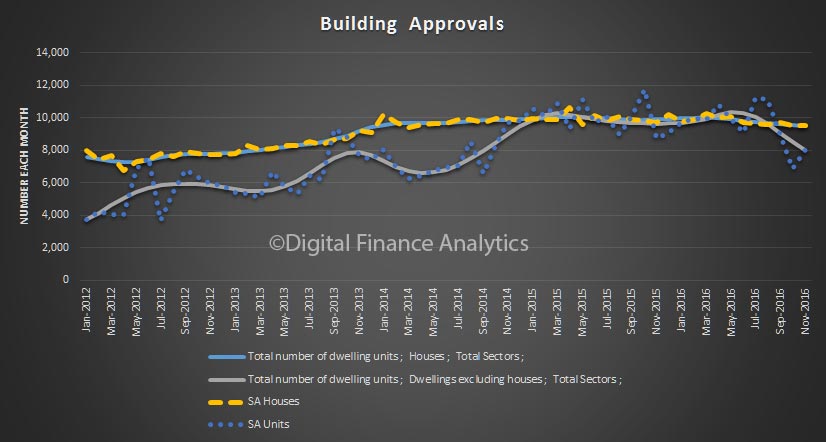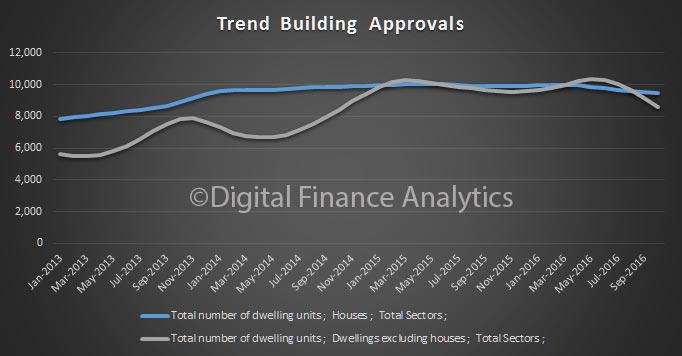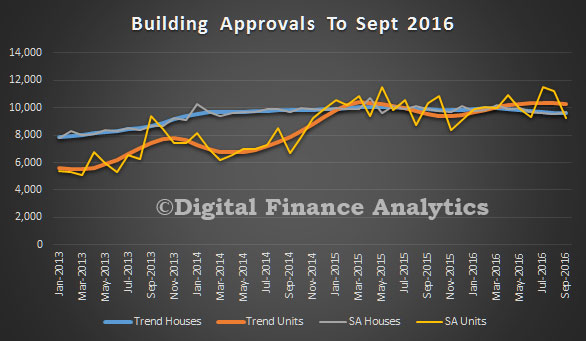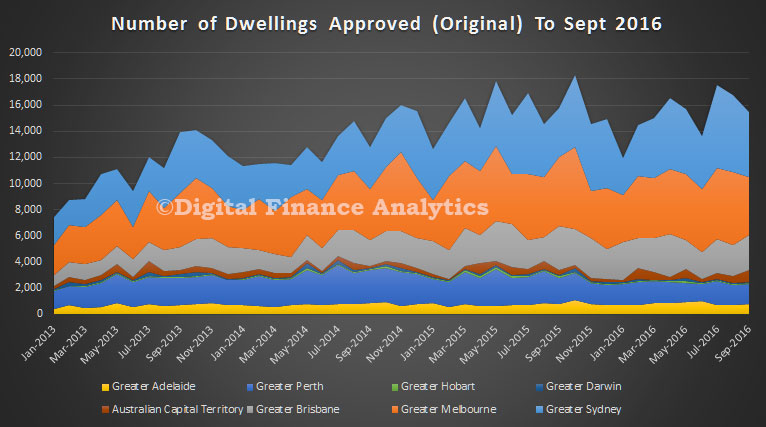Growth in Victoria has driven total dwelling approvals higher in October (up by more than 20% in that state), whilst there was a fall in New South Wales. We are still seeing the strongest demand for property in VIC, thanks to strong migration, though supply and demand is patchy as the recent ANU study highlighted.
The number of dwellings approved rose 0.7 per cent in October 2017, in trend terms, and has risen for nine months, according to data released by the Australian Bureau of Statistics (ABS) today.
“Dwelling approvals have continued to strengthen in recent months, rising above 19,000 dwellings in October 2017,” said Justin Lokhorst, Director of Construction Statistics at the ABS. “This is the first time the series has reached this level since August 2016.”
Dwelling approvals increased in October in Tasmania (4.1 per cent), Victoria (3.8 per cent), South Australia (0.6 per cent), Western Australia (0.3 per cent) and Northern Territory (0.3 per cent), but decreased in the Australian Capital Territory (5.3 per cent), Queensland (1.7 per cent) and New South Wales (0.3 per cent) in trend terms.
In trend terms, approvals for private sector houses rose 0.6 per cent in October. Private sector house approvals rose in Queensland (1.4 per cent), Victoria (1.2 per cent) and South Australia (1.0 per cent), but fell in Western Australia (1.0 per cent) and New South Wales (0.7 per cent).
In seasonally adjusted terms, dwelling approvals increased by 0.9 per cent in October, driven by a rise in private house approvals (1.5 per cent), while private dwellings excluding houses fell 1.0 per cent.
The value of total building approved rose 0.5 per cent in October, in trend terms, and has risen for 10 months. The value of residential building rose 0.8 per cent while non-residential building was flat.

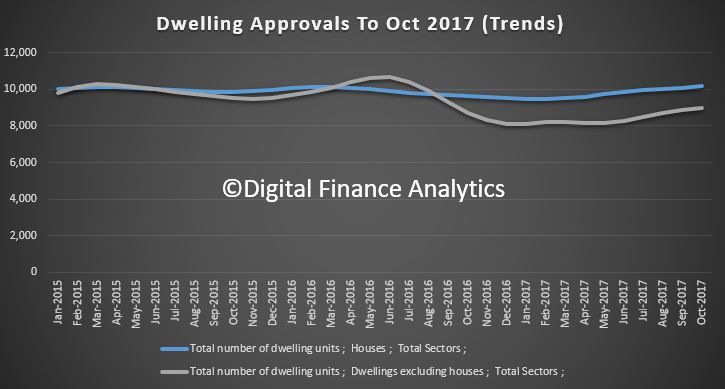
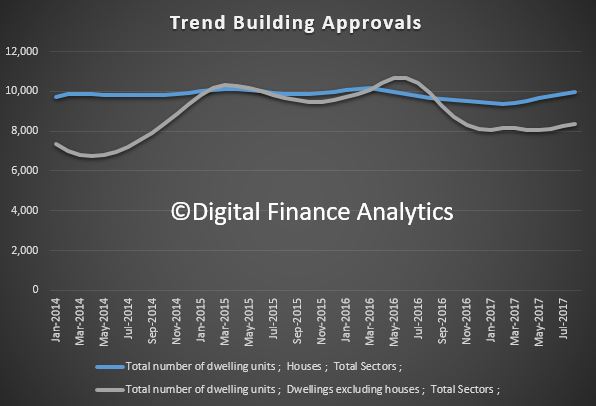
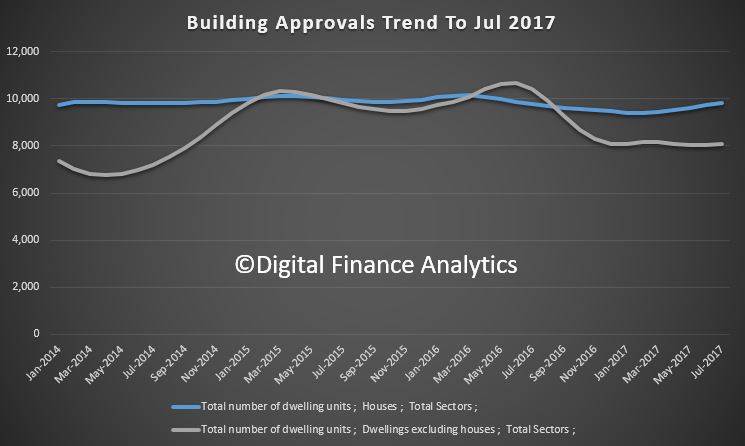
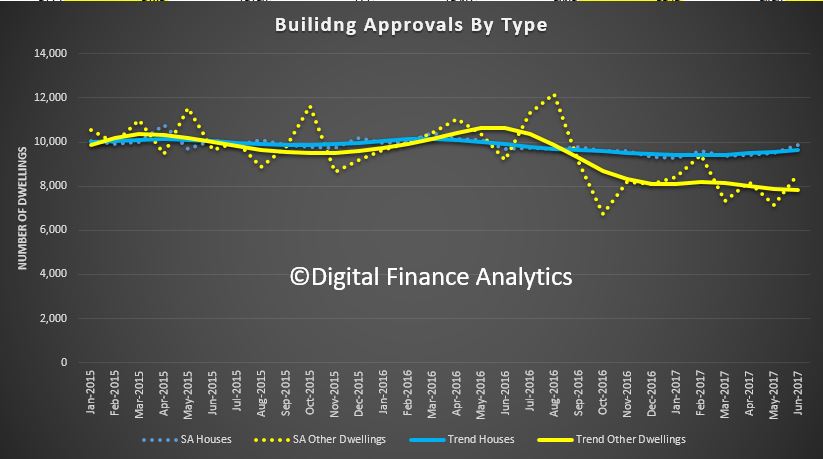
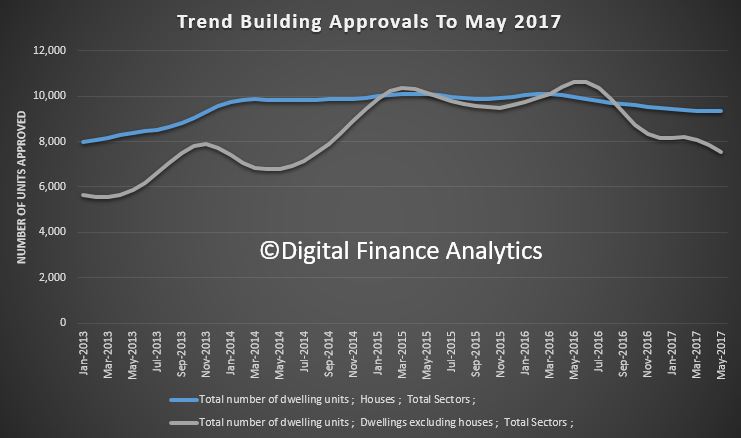
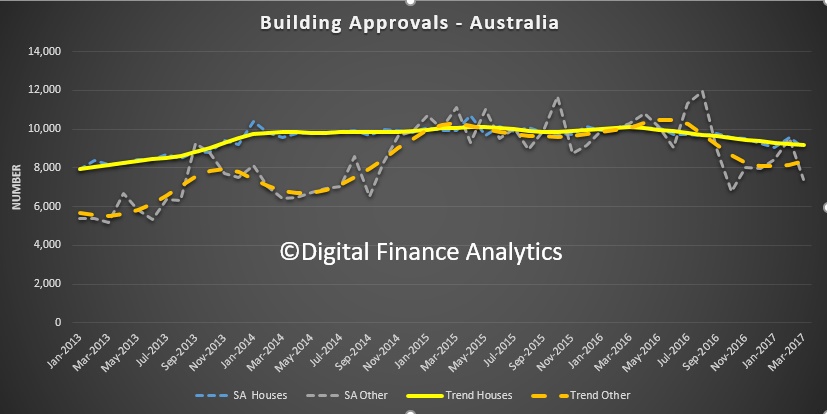
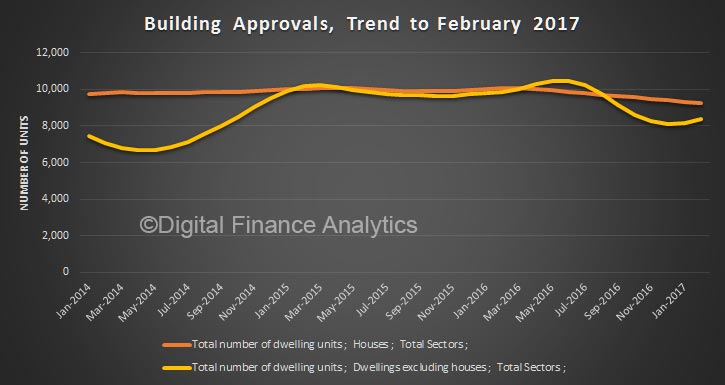 The trend estimate of the value of total building approved fell 0.1% in February and has fallen for seven months. The value of residential building rose 1.5% and has risen for two months. The value of non-residential building fell 3.3% and has fallen for six months.
The trend estimate of the value of total building approved fell 0.1% in February and has fallen for seven months. The value of residential building rose 1.5% and has risen for two months. The value of non-residential building fell 3.3% and has fallen for six months.